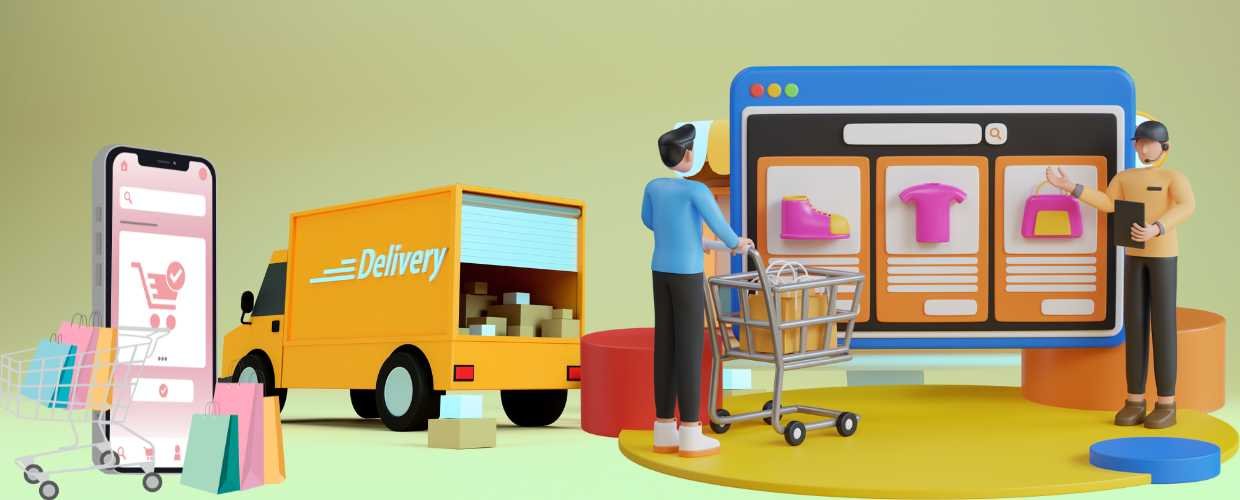E-commerce platforms have revolutionized how businesses operate and connect with their customers. Understanding the intricacies of procuring and implementing an e-commerce platform is crucial to succeed in the digital marketplace.
Guide to Procure and Implement E-commerce Platforms
This guide aims to provide comprehensive insights into the entire process, from defining your goals to launching your online store, ensuring that you make informed decisions and create a successful digital storefront.
Define Your E-commerce Goals and Objectives
Before diving into the world of e-commerce platforms, take the time to define your goals and objectives clearly. Are you aiming to boost sales, expand your customer base, or establish a robust online presence? By pinpointing your objectives, you’ll have a solid foundation to build your e-commerce strategy.
Conduct Market Research
Market research is pivotal in understanding your target audience, evaluating competitors, and staying updated on industry trends. Analyze your competitors’ e-commerce platforms to identify what sets them apart and how you can differentiate your online store. This research will provide valuable insights that shape your platform selection.
Determine Your Budget
Your e-commerce journey needs a well-defined budget encompassing initial costs and ongoing expenses. This budget should include expenses related to platform procurement, hosting, maintenance, marketing, and any additional resources required. Having a clear budget will help you make cost-effective decisions throughout the process.
Choose Between Platform Types
One of the initial decisions you’ll need to make is whether to opt for a hosted or self-hosted e-commerce platform. Hosted platforms are user-friendly and handle most technical aspects for you but may have limitations in customization. Self-hosted platforms offer more control and flexibility but require technical expertise. Your choice depends on your budget, technical capabilities, and desired level of control.
Research E-commerce Platform Options
The e-commerce landscape is diverse, with numerous platform options available. Conduct thorough research into these platforms, considering ease of use, scalability, payment gateway compatibility, available integrations, and pricing structures. Popular choices include Shopify, WooCommerce, Magento, BigCommerce, and others.
Select the Right E-commerce Platform
Based on your research, select the e-commerce platform that aligns most closely with your goals and budget. Ensure that it provides the necessary features and flexibility to support your online business. Remember that your selected platform will be the foundation of your digital storefront.
Customize Your E-commerce Website
Personalization is key to creating a unique and compelling online shopping experience. Customize your e-commerce website to reflect your brand identity. This customization includes selecting an appropriate theme or design template, adding and organizing product listings, configuring payment gateways, and setting up shipping options. The goal is to create a visually appealing and user-friendly online store.
Implement Security Measures
Security is paramount in e-commerce. Implement robust security measures to protect your business and customer data; this includes obtaining SSL certificates to secure transactions, using strong and regularly updated passwords, and staying compliant with data protection regulations, such as GDPR. Invest in security to build trust with your customers.
Optimize for Mobile Responsiveness
Mobile commerce is rising, and your e-commerce platform must be mobile-responsive. A responsive design ensures that your website adapts seamlessly to various screen sizes, providing a user-friendly shopping experience on smartphones and tablets. Mobile optimization is critical for reaching a broader audience.
Set Up Analytics and Monitoring
Data is your ally in the e-commerce world. Implement tools like Google Analytics to track website traffic, sales, and user behavior. These insights will help you make data-driven decisions and continually optimize your e-commerce platform for better performance.
Develop a Marketing Strategy
Creating a comprehensive marketing strategy is vital to attracting and retaining customers. To drive traffic to your e-commerce store, utilize various digital marketing channels, including search engine optimization (SEO), email marketing, social media, and paid advertising. Consistent promotion and engagement with your target audience are essential for sustained success.
Train Your Team
If you have a team managing your e-commerce platform, train them to ensure they can effectively handle and update the website. Familiarize them with order processing, inventory management, customer support, and content update processes. Well-trained personnel contribute to efficient operations.
Launch Your E-commerce Store
After rigorous testing and fine-tuning, it’s time to launch your e-commerce store. Announce the launch through various marketing channels, and be prepared to handle inquiries, process orders, and address any technical issues promptly. Your launch should mark the beginning of your online business’s journey.
Monitor and Improve
The work doesn’t end with the launch; it’s just the beginning. Monitor your e-commerce platform’s performance by analyzing sales data, customer feedback, and website analytics. Use these insights to identify areas for improvement and make necessary adjustments to enhance the user experience and drive growth.
Conclusion
Procuring and implementing an e-commerce platform is a multifaceted process that requires meticulous planning and execution. This guide will enable you to navigate each stage, make informed decisions, and create an engaging and successful online shopping destination. Remember that ongoing maintenance, optimization, and staying attuned to evolving market dynamics are essential for long-term prosperity in the competitive e-commerce landscape.










